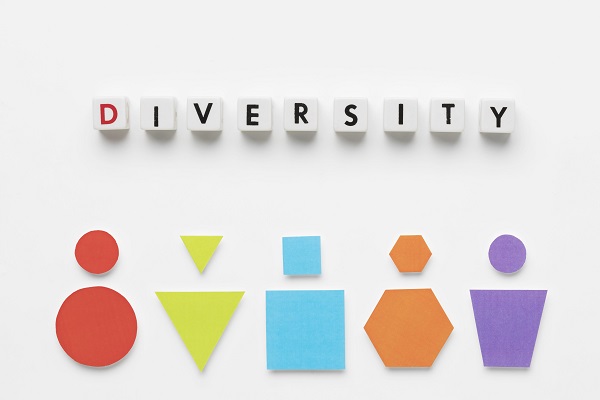Diversity, Equity and Inclusion are vital to business success. But so often, organizations fail to fully understand and incorporate a strategy that works to embrace the benefits that a diverse workforce can bring.
Does this impact their operation negatively?
The short answer is yes. For a diversity program to be successful, the entire organization must see it as just an achievable percentage. They must create an environment where the entire workforce knows exactly what being part of a truly inclusive diverse workforce involves.
Your organization should not see diversity as something that only affects women or minorities. You cannot fix it by placing a woman of color in a strategic position. This is something affecting everyone, and people should embrace it as such. Otherwise, your business will miss the benefits of a truly diverse and inclusive workforce. However, it takes work to get there.
It’s Not Just A Numbers Game
You have a diversity and inclusion program though, so, where is it going wrong? Throughout the UK and US, the low number of women in top full-time executive roles is perhaps a striking reminder. There is still a long way to go in the inclusion stakes for women. We must believe that this is the case for other diverse minorities also. If we don’t see a truly representative number of senior women within a workforce, we can be sure that there is an underrepresentation of other ethnic, racial, religious, disabled or non-defining individuals. A recent Forbes article makes it clear why it’s more than just numbers. You can measure diversity with numbers. But managing equity and inclusion effectively will make a business truly diverse. Then, you’ll see benefits and avoid being caught by the negatives.
It’s Not Working
Despite your compulsory annual diversity awareness training and HR efforts to ensure the numbers add up, you may face workplace conflict and resistance. This may result in a reduction in productivity and revenue.
You have probably read the studies showing that a diverse workforce increases productivity and revenue. So, where are you going wrong? If all you have managed to do is create a group of people that argue, stifle ideas and as a result, do less than before, you are not alone. Many businesses see diversity and inclusion as simply a recruitment of the token diverse workforce. They forget about equipping the team with the skills to make it gel and bring the benefits you’ve read about.
Diversity must become part of your business core values. Far from a one-off training session (which, by the way, is guaranteed to get backs up), you must empower equity and inclusion. So where might it be going wrong?
- Leaders and HR see diversity as an issue that just affects minority groups or women. People must see tha diversity affects everyone. Leaders must create an inclusive equitable environment, setting clear expectations and possibilities for everyone.
- Minorities are or feel ignored or muted. They must have a voice and a place where they can be themselves.
- Too much focus on diversity. Compulsory training will often exacerbate a feeling of punishment ‘someone did something wrong’. This could immediately create defensive behaviors or reluctance in the very people you need on board; your workforce.
- Employees are often fearful of disagreements so isolate minorities. The focus must be on the freedom to express opinions and respect them. You should not see discussion and disagreement as inherently discriminatory. Everyone has differences of opinion, and as long as the discussion is constructive and not personal, this could be beneficial.
So what is the answer?
Promoting diversity and inclusion will bring benefits. Aim to:
- Change culture – effectively demonstrated from the top down.
- Get HR onboard – expand your recruitment and promotion procedures to look at a wider range of diverse groups. Move beyond numbers to see value within candidates and create competent leaders to instill these values.
- Don’t talk down to minorities in the workplace – recognize and encourage freedom of expression. Hearing and exploring diverse possibilities will identify a greater range of solutions and paths and build on inclusion and equity.
- Equip teams for success – include a diverse set of people, giving time and freedom to explore opinions and differences in a structured and constructive managed approach.
- Practice strong core values that demonstrate equality, not just talk about it.
- Set clear expectations: everyone throughout the ranks must understand everyday best practices and it is routine.
- Be specific – often lack of understanding creates problems, leadership must be clear.
- Be proactive – diversity and inclusion training will enable problem-solving, as long as it is seen as good practice for all. People need to feel valued to be committed, and a committed workforce will perform better.
- Don’t react to negatives with an immediate correction. It is important that all actions are authentic and the culture of everyday inclusion is the answer.
Communication Matters
The driver for change is easily misinterpreted and may cause friction. Individuals may feel targeted or to blame. Perhaps, consider hiring a change management consultant or identifying suitable candidates for Change management training to smooth the path. The biggest hurdle to success is the wrong leader.
Diversity must be more than a ‘buzzword’ and having leaders with powerful skills of engagement who can overcome resistance and perhaps more importantly make change stick is critical.
Poor inclusion and equity practices damage business. Organizations effectively and actively inviting diverse workforces actually see increased productivity, greater creativity and a stronger chance of hiring the best. We have a moral duty that should see businesses go far beyond any legal duty.
A business seeking to hire, promote or keep the best, regardless of nationality, gender identification, religious beliefs, skin color or physical ability will create a diverse workforce from top to bottom and be stronger for it. This will result in a stronger more capable workforce than those who stick to less diverse, more rigid and now most definitely outdated practices.
Businesses must facilitate a wider focus on feeling valued and able to contribute without the need to bend to stereotypical behaviors or types. Leaders must be able to handle, develop and create diverse teams with the confidence and ability to express opinions without discrimination.
An understanding of cultural differences and impartial conflict resolutions will allow diverse workforces to manage the relationship and work alongside each other for the greater good of a business. Effective equity and inclusion practices will ensure this happens without feeling that race, culture, religion or differences are a barrier.
A workforce that feels appreciated will show higher commitment, are likely to be retained, stay loyal and work harder – good for profit and productivity.






Leave A Comment